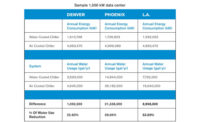This month’s issue of Engineered Systems showcases cooling towers. This compelled me to examine some of the issues and concerns related to their design, installation, commissioning, and operation.
Before we get going, you may want to grab your handy copy of 2020 ASHRAE Handbook, “HVAC Systems and Equipment,” and read through Chapter 40, “Cooling Towers.”
When designing cooling towers for HVAC project applications, there are a few things I consider:
1. What is the optimum type of cooling tower for the job? Is it draw-through, blow-through, centrifugal fan, axial fan, stainless steel construction, fiberglass, etc.?
Comment: Manufacturers offer a wide variety of towers. Each has an appropriate application, depending on the HVAC design intent.
2. Coordinate with the other trades. Architects and the neighbors may not want to see or hear this beautiful piece of engineering technology.
Comment: Consultants need to collect a great deal of information before moving forward with the project. Such data includes the equipment’s structural weight and dimensions; the plumbing and water makeup; electrical and power (normal and/or emergency) information, including starter, disconnect, and heat tracing data; the acoustics and sound levels; any airflow restrictions; the condenser water pump’s net positive suction head, open system static head, compound gage at the pump inlet, and the inlet strainer versus the duplex strainer; contractor delivery and rigging information; commissioning and design intent, functional performance tests, and Cooling Tower Institute (CTI) certification; and maintenance and Legionella precautions, including how the equipment will be accessed during service, how OSHA safety protocols will be followed on and around the equipment, etc.
3. Operation tasks include the scope of the chemical treatment (automatic or manual) feed and condenser water supply and return (CWS and CWR) temperature controls through an existing building automation system (and/or new system).
Comment: Will this system operate only during air conditioning season? What is the wet bulb outdoor design temperature for summer heat rejection performance? Will this cooling tower be used in sync with a waterside economizer? What are the CWS and CWR design temperatures as well as the chilled water supply and return temperature (CHWS and CHWR) for waterside economizer applications? What are the condenser water and chilled water pressure drops through the waterside heat exchanger? Is the heat exchanger piped correctly (counterflow versus parallel flow)? How has redundancy been engineered into this cooling tower application (0%, 50%, or 100%), are the controls automatic changeover, and what will determine the changeover schedule (run hours, increase in pressure drop through inlet condenser pump strainer, on two weeks, off two weeks, etc.)?





